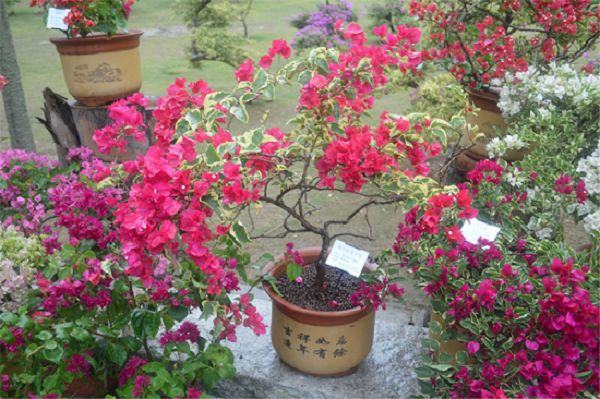Why are the branches and leaves of potted flowers wilting?
(1) drought: drought will threaten the normal growth of flowers, the leaves of drought-affected flowers are dim and dull, scorched spots appear on the scorched tip and edge of leaves; dry tips, dry petals and early fallen flowers appear in new buds, buds and young flowers, and the leaves turn yellow and wither and fall off from bottom to top, and even the plants are in a serious withering state until they dry up and die. Drought generally has the following conditions.
1) Atmospheric drought: due to dry and windy, low air relative humidity and strong sunlight, the water transpiration of leaves is enhanced, and the water absorbed by roots can not meet their needs, which will cause temporary wilting of branches and leaves. For example, the leaves of Chrysanthemum morifolium are young and large, although the potted soil is not short of water when the light is strong at noon, it will often lead to leaf wilting due to the imbalance of water absorption and consumption; once the light intensity weakens and the temperature decreases, it will return to the normal state.
2) soil drought: when the available water in the basin soil decreases to the level needed for flower abandonment growth, and the water absorption rate of the root system can not keep up with the leaf water transpiration, it will cause the water in the plant to exceed its expenditure, that is, it will cause branches and leaves to wilt, but the plant will return to normal after watering. When the water content of the basin soil decreases below the withering point, it will cause plant death.
3) physiological drought: when fertilization is too concentrated, when the concentration of soil solution is higher than that of root cell solution, it will cause obstacles to water absorption and transport by roots, resulting in wilting of branches and leaves. When the plant is unable to absorb enough water from the basin due to soil freezing and too much water, it will also cause branches and leaves to wilt due to physiological drought. Physiological drought generally cannot be solved by watering.
(2) wilting caused by infectious diseases
After the vascular bundle of the stem or root of the flower is infected by pathogens, it will produce a large number of bacteria and toxins in the transport tissue, hindering the transport of water, thus making the flowers wilt. Being harmed by stem rot, dry rot and root nematode disease will destroy the normal absorption and transport of plants and lead to wilting.
Due to wilting caused by infectious diseases, appropriate pesticides should be sprayed according to different diseases.
Related
- What if the leaves of potted flowers turn yellow?
- Florescence Control of several Flowers
- Anti-freezing technology and post-freezing nursing technology of flowers
- What is the classification of flowers? What are the common methods of flower classification?
- Prevention and control of alkali and acid damage of flowers in courtyard
- Technology of Anti-freezing and restoring growth of Flower seedlings in greenhouse and greenhouse
- How does flower fertilization not hurt the root? Fertilization technology of flowers
- Key points of disinfection in flower greenhouse
- Several pesticides that are banned or used cautiously in flowers
- How to fertilize the flowers that watch the leaves?



